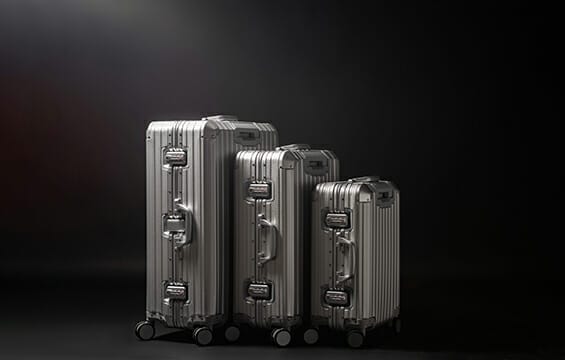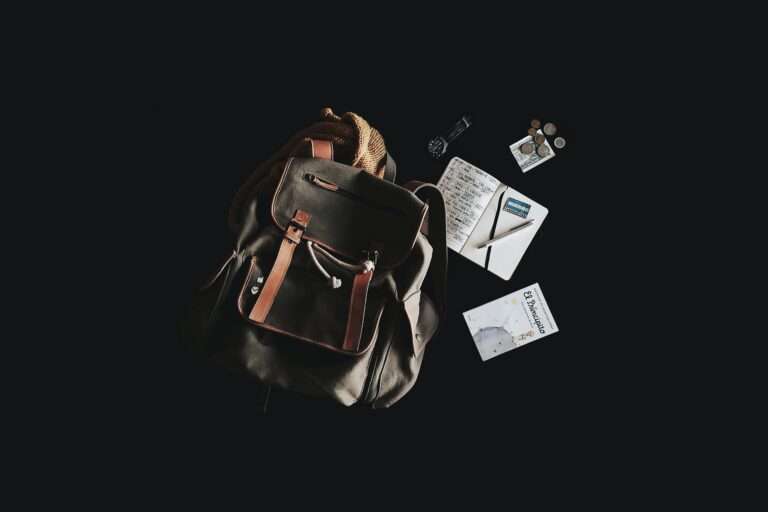Jet-Set in Comfort: The Ultimate Suitcase Guide for Europe
When embarking on a European adventure, one of the most important decisions you will make is choosing the right suitcase. A suitcase can make or break your travel experience, as it is responsible for carrying all of your belongings and ensuring they arrive safely at your destination. The right suitcase can provide comfort, convenience, and peace of mind throughout your trip, while the wrong one can lead to stress, discomfort, and even damage to your belongings.
Choosing the right suitcase is crucial for a comfortable and stress-free trip. A well-designed suitcase can make it easier to navigate crowded airports, cobblestone streets, and public transportation systems. It can also help you stay organized and maximize space, allowing you to pack efficiently and effectively. Additionally, a secure suitcase can protect your belongings from theft or damage, giving you peace of mind while you explore new destinations.
Size Matters: Finding the Perfect Suitcase for Your Travel Needs
When choosing the size of your suitcase for your European adventure, there are several factors to consider. First, think about the length of your trip and how much clothing and other items you will need to pack. If you are planning a short trip, a smaller suitcase may be sufficient.
However, if you are planning a longer trip or will be travelling to multiple destinations, a larger suitcase may be necessary.
It is also important to consider the weight restrictions of the airlines you will be flying with. Many European airlines have strict weight limits for checked baggage, so choosing a lightweight suitcase can help you avoid additional fees or having to leave items behind.
Additionally, consider the size and weight of the suitcase itself. A heavy or bulky suitcase can be difficult to manoeuvre and may take up valuable space in your accommodations.
Get your Notion Travel Planner Template!
Embark on your next adventure with the Wanderlust Planner – Notion Travel Planner Template – Notion Travel Planner Template (chasingwhereabouts.com), the ultimate Notion Travel Planner Template. Organize your wanderlust-fueled dreams and turn them into unforgettable journeys. Whether you’re a seasoned globetrotter or a newbie explorer, this template has you covered.
Material Matters: Choosing the Right Material for Your Suitcase
When it comes to choosing the material for your suitcase, there are several options to consider, each with its own pros and cons. Hardshell suitcases, typically made of polycarbonate or ABS plastic, offer excellent protection for your belongings and are resistant to scratches and dents.
They are also lightweight and easy to clean. However, they may be less flexible and have less internal storage space compared to softshell suitcases.
Softshell suitcases, made of durable fabrics such as nylon or polyester, are more flexible and can expand to accommodate additional items. They also tend to have more pockets and compartments for organization.
However, they may be less resistant to damage and may not provide as much protection for fragile items. Hybrid suitcases, which combine the features of both hardshell and softshell suitcases, offer a good balance between durability and flexibility.
For European travel, it is recommended to choose a suitcase made of durable materials that can withstand the rigours of travel. Look for suitcases with reinforced corners and sturdy zippers to ensure they can handle the demands of European transportation systems.
Additionally, consider the weather conditions of your destination. If you will be travelling to a rainy or snowy region, a water-resistant or waterproof suitcase may be a good choice.
Wheels and Handles: The Importance of Mobility and Comfort
Having a suitcase with wheels and a comfortable handle can make a world of difference when it comes to mobility and comfort during your European adventure. Wheeled suitcases allow you to easily navigate airports, train stations, and city streets without having to carry heavy bags.
They also reduce the strain on your body, preventing back and shoulder pain that can result from carrying a heavy suitcase for long periods of time.
When choosing a suitcase with wheels, look for one that has four wheels instead of two. Four-wheel suitcases, also known as spinner suitcases, offer better manoeuvrability and stability.
They can be easily pushed or pulled in any direction, making it easier to navigate crowded spaces. Additionally, look for suitcases with sturdy and smooth-rolling wheels that can handle different types of terrain.
In addition to wheels, the handle of your suitcase is also an important consideration. Look for suitcases with telescopic handles that can be adjusted to your preferred height.
The handle should be comfortable to hold and easy to grip, allowing you to easily manoeuvre the suitcase. Some suitcases also have handles on the top and side, making them easier to lift and carry when necessary.
The Best Suitcase For European Travel
Travelpro Maxlite 5 Softside Expandable Carry on Luggage with 4 Spinner Wheels, Lightweight Suitcase, Men and Women, Black, Carry On 21-Inch
$144.49 in stock
6 used from $126.66
Features
- Carry on bag is a half pound lighter than Maxlite 4, this ultra lightweight 21 inch carry on luggage meets carry on size restrictions for most domestic airlines. H20 Guard protects the interior lining from moisture.
- This carry-on luggage has 4 wheel spinners that rotate 360 degree for a smooth roll. Lightweight, sturdy PowerScope handle stops at 38 inch and 42.5 inch features a patented contour grip with rubberized touch points for easy maneuvering. Unique bottom tray design increases durability for this soft sided luggage.
- Carry on suitcase expands up to 2 inch to maximize packing capacity. Features low profile top, side and bottom carry handles, two exterior compartments, full length interior lid pocket, side accessory pocket and adjustable hold down straps for packing convenience.
- Carry-on luggage with spinner wheels: Case Dimensions: 21 in x 14 in x 9 in; Overall Dimensions ( includes wheels & carry handles): 23 in x 14.5 in x 9 in; Weight: 5.4 lbs, Volume : 46 L
- Carryon luggage with spinner wheels has Limited Lifetime Coverage plus trusted companion promise, which covers the cost of repair for damage from airline or other common carrier for 1 year. Applicable when purchased as new and after registration.
Samsonite Freeform Hardside Expandable with Double Spinner Wheels, Carry-On 21-Inch, Mint Green
$149.99 in stock
Features
- 21" Spinner Luggage maximizes your packing power and meets most carry-on size restrictions for those traveling domestically and looking to stay light
- Packing Dimensions: 19.5" x 14.5" x 10.0", Overall Dimensions: 21.25" x 15.25" x 10.0", 6.5 lbs.
- 10 YEAR LIMITED WARRANTY: Samsonite products are rigorously tested to ensure our products meet stringent standards. This bag comes with a 10-year warranty against defects in materials and workmanship.
- Recessed TSA combination lock provides security when checked belongings, cases expand for added packing capacity
- Ultra-Light, ultra strong shells withstand the rigors of modern travel
SwissGear Sion Softside Expandable Roller Luggage, Black, Carry-On 21-Inch
Features
- Rolling Suitcase: Get through a crowded airport or down narrow airplane isles easily with this stylish carry-on luggage with 360-degree multi-directional spinner wheels and a locking retractable push/pull handle
- Multiple Front Panel Pockets: Featuring front pockets with a built-in ID tag, this ergonomically expandable luggage measures 22.75 x 14.25 x 10.25 inches including wheels and handles; packing dimensions are 21 x 12.75 x 10.25 inches
- Secure and Durable: Expandable travel case gives you ample parking space and made from a durable, scuff-resistant polyester fabric with fully lined interior; also features adjustable tie-down straps for securing garments in place
- Effortless Organization: This luggage bag maximizes packing efficiency with a removable zippered wet bag, large mesh lid pocket, and packing pocket for holding small items and accessories
- Convenient Side Handles: With reinforced padded top handle with an integrated side and bottom handle, this roller suitcase makes lifting and carrying your luggage easy
Packing Tips: Maximizing Space and Organization in Your Suitcase
Efficient and effective packing is essential for maximizing space and organization in your suitcase. Here are some tips to help you pack smart for your European adventure:
1. Make a packing list: Before you start packing, make a list of all the items you will need for your trip. This will help you stay organized and ensure you don’t forget anything important.
2. Roll your clothes: Rolling your clothes instead of folding them can help save space and prevent wrinkles. It also makes it easier to see what you have packed and access items without having to unpack everything.
3. Use packing cubes or compression bags: Packing cubes or compression bags can help you organize your belongings and maximize space in your suitcase. They allow you to separate different types of items and compress them to save space.
4. Pack versatile clothing: Choose clothing items that can be mixed and matched to create different outfits. This will help you pack lighter and still have plenty of options for different occasions.
5. Utilize empty spaces: Fill empty spaces in your suitcase, such as shoes or the inside of hats, with smaller items like socks or underwear. This will help maximize space and prevent items from shifting during travel.
6. Pack toiletries in travel-sized containers: To save space and comply with airline regulations, transfer your toiletries into travel-sized containers. Alternatively, consider purchasing toiletries at your destination to save space and avoid potential leaks.
Security Features: Keeping Your Belongings Safe While Traveling
Keeping your belongings safe while traveling in Europe is of utmost importance. Here are some features to look for in a suitcase to ensure the security of your belongings:
1. Locking mechanisms: Look for suitcases with built-in locks or TSA-approved locks. These locks can help prevent theft and provide peace of mind while you are away from your suitcase.
2. Anti-theft features: Some suitcases come with additional anti-theft features, such as slash-proof materials or hidden pockets. These features can help protect your belongings from pickpockets or thieves.
3. RFID-blocking pockets: RFID-blocking pockets can protect your passport, credit cards, and other sensitive information from electronic theft. These pockets block the signals that thieves use to scan and steal your personal information.
4. Durable construction: Choose a suitcase with durable construction, such as reinforced corners and sturdy zippers. This will help prevent damage to your belongings and deter thieves from easily accessing your suitcase.
Style and Design: Finding a Suitcase That Fits Your Personal Taste
While functionality and security are important factors to consider when choosing a suitcase, style and design should not be overlooked. Your suitcase is a reflection of your personal style and can make a statement about who you are. It is important to choose a suitcase that you love and feel confident using.
When choosing a suitcase that fits your personal taste, consider factors such as color, pattern, and overall design. Choose a color or pattern that you find visually appealing and that stands out from other suitcases. Additionally, consider the overall design of the suitcase, including the shape, texture, and any additional embellishments or details.
Remember that your suitcase will be with you throughout your European adventure, so choose one that you will enjoy using and that will bring you joy every time you see it. Whether you prefer a sleek and minimalist design or a bold and vibrant pattern, there is a suitcase out there that will match your personal style.
Budget-Friendly Options: Affordable Suitcases That Don’t Compromise Quality
Finding a quality suitcase on a budget is possible with some careful research and consideration. Here are some tips for finding an affordable suitcase that doesn’t sacrifice quality:
1. Set a budget: Determine how much you are willing to spend on a suitcase and stick to that budget. This will help narrow down your options and prevent you from overspending.
2. Compare prices: Shop around and compare prices from different retailers. Look for sales, discounts, or promotions that can help you save money on your purchase.
3. Consider second-hand options: Consider purchasing a second-hand suitcase from online marketplaces or thrift stores. Many second-hand suitcases are in excellent condition and can be purchased at a fraction of the original price.
4. Look for sales or clearance items: Keep an eye out for sales or clearance items at retailers. These items are often discounted to make room for new inventory and can offer significant savings.
5. Consider lesser-known brands: While well-known brands may come with a higher price tag, lesser-known brands can offer quality suitcases at more affordable prices. Read reviews and do some research to ensure the brand is reputable and offers good quality products.
Budget Tip: You can avoid ATM Fees by using a Wise Travel Card. You can check more about that in our in depth review.
Top Brands: A Guide to the Best Suitcase Brands for European Travel

When it comes to choosing a suitcase for your European adventure, there are several top brands that are known for their quality and durability. Here are some of the best suitcase brands for European travel:
1. Samsonite: Samsonite is one of the most well-known and trusted suitcase brands in the world. They offer a wide range of suitcases in different sizes, materials, and designs to suit every traveler’s needs.
2. Travelpro: Travelpro is a popular choice among frequent travelers and airline professionals. Their suitcases are known for their durability, functionality, and innovative features.
3. Delsey: Delsey is a French brand that is known for its stylish and high-quality suitcases. They offer a range of suitcases in different sizes and materials, including both hardshell and softshell options.
4. Rimowa: Rimowa is a luxury suitcase brand that is known for its sleek design and high-quality craftsmanship. Their suitcases are made of durable materials and come with innovative features such as multi-wheel systems and integrated TSA locks.
5. Briggs & Riley: Briggs & Riley is a premium suitcase brand that offers a lifetime warranty on their products. Their suitcases are known for their durability, functionality, and attention to detail.
6. MVST Travel Suitcases are a stylish and functional luggage solution designed to enhance your travel experience. Crafted with attention to detail and durability in mind, these suitcases are ideal companions for your journeys, whether for business trips, vacations, or any other travel adventures.
Conclusion: Choosing the Perfect Suitcase for Your European Adventure
In conclusion, choosing the right suitcase for your European adventure is crucial for a comfortable and stress-free trip. Consider factors such as size, material, wheels and handles, packing tips, security features, style and design, budget-friendly options, and top brands when making your decision. By taking the time to choose the perfect suitcase, you can ensure that your belongings are safe, organized, and easily accessible throughout your European adventure. Happy travels!

















